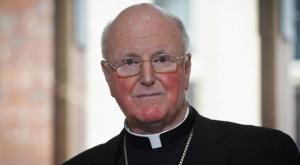Israel for 10 days. Reflections:
Its early morning in the hotel, the last morning of this trip. We have seen angry hope, sad hope, resigned hope, cynical hope, confused hope, naïve hope, and possibly even hopeless hope. And we’ve see the parallel forms of hopelessness.
In Tel Aviv we met, as I have met before, a city at once familiar and sad. Familiar because it could be any down-at-the-heal Eastern European city. And that includes the tree lined avenues with broken sidewalks, the three and four story shophouses and apartments, the mixture of international and newer styles of architecture, the vibrant street life, the cafes. The sea, omnipresent in the atmosphere, is blue and lovely even if the shore is rocky. Yet there is also the emptiness. The synagogues are empty, well over a hundred nearly abandoned and the largest and oldest unable to make a 10 man minyon for sabbath worship. The ultra orthodox have fled the cosmopolitan dream of ben Gurion for their enclaves around Jerusalem, leaving the city the less for it. And of course the government fled to Jerusalem as well, devoting itself to a prosperous illusion on a foundation of discontent while Tel Aviv languishes. It was in Tel Aviv that the protests broke out last year, and the homeless sought solace in fire. Jerusalem of the pilgrims and the tourists would never be allowed such a shattering of illusions by the security forces.
Our visit was one punctuated by hope – neither cynical nor naïve nor angry. Just built on young people creating their own spiritual future out of the shattered stones of scripture, the laughter and crying of their poets, on the call from their southern bounds refracted across the Atlantic into jazz, and on the irrepressible creativity that can arise only when boundaries are crossed. Tel Aviv is the only place I’ve been in Israel I can imagine living. It would not be easy of course. There is a coarseness among all the exiles – particularly in the hot humid air of summer. But it is the only real city I’ve visited here. The rest, including Jerusalem, are suburbs built in defiance of its dream.
Last night, as we walked the old city and then had lunch in an upscale open air mall next door, is the pervasiveness here in Jerusalem of just getting on with life. The Palestinians have a name for this: “normalization.” What it means is accepting the current situation – with most of the West Bank controlled by the Israeli military, more and more settlements in that West Bank, and Palestinians living in increasingly isolated cities – as “normal.” In other words normal isn’t a good word, it means accepting the unacceptable.
Everyone here talks about changing the facts on the ground. Israeli settlements in the West Bank do this. Put 30,000 people 10 miles deep into the future Palestinian state, build them a huge planned community complete with water and roads into Tel Aviv, and then make sure they are secular Jewish commuters and not religious crazies. In other words make it all very normal. Can’t be changed. Facts on the ground. Normal.
We visited the doppleganger of these settlements in the West Bank called Rawabi. Just for Palestinians. It is a planned city financed by the Qataris and managed by rich Palestinians. Quite amazing and well on its way. 6,000 families will move in in 18 months. But what are the facts being changed “on the ground?” Housing for certain, and a claim staked just a mile or so from Israel settlements. But there is much more at stake. When its head was asked about whether it made room for traditional multi-generational Palestinian family structures he said bluntly “no.” It isn’t just intended to provide homes for the emerging middle and upper middle class families of the territories. It is intended to create an island of modernity in a pre-modern ocean. It is a place the young working Palestinians will escape (for better or worse) much of their traditional culture and past. In this sense modern universities, schools, and all sorts of other institutions are creating new cultural and economic facts on the ground. They are normalizing modernity.
This kind of normalization has its enemies. They live in the ultra-orthodox settlements and neighborhoods in Jerusalem. They live in the Gaza Strip and call themselves Hamas. They survive on the self-doubt of the less religious who believe that perhaps their fierce piety is really true faith. They feed on their own self-righteousness and the charity of those who believe it is actual righteousness.They are the normalizers of life in the realm of religious myth rather than human reality.
Yesterday we read an 1800 year old critique of such folks. It is the story of Shimon bar Yochai, whose death date attracts hundreds of thousands of pilgrims to a certain mountainside each year. It seems he was forced to go into hiding in a cave from the Romans. For 12 years he and his son lived in a cave. All day they sat in sand up to their necks and discussed the Torah. They were fed by a carob tree and a small spring of water. Eventually they heard that there was a new Roman emperor, and they came out of hiding. They were appalled when they saw people actually working in the fields rather than studying the Torah, and with their pious laser eyes they destroyed everything they saw. For this God put them back in their cave for a year to think things over. They emerged less fierce, although the son tended to burn things up and the father tended to patch up what he had burned. (Other stories indicate that the bar Yochai remained quite the smiter when he got upset.) Do you normalize injustice when you go around hastily repairing it effects instead of stopping it?
Some of the questions we are left with after a week. And here I’ve said almost nothing about the days of study at the Hartman. The fabulous scholarship, the richness of the Talmud, the fellowship and discussion, the honesty, the full embodied engagement with social reality, an intellectual spaciousness that matches the pleasant courtyards. Alas, here in Israel, here in Jerusalem, such things are not normal.











